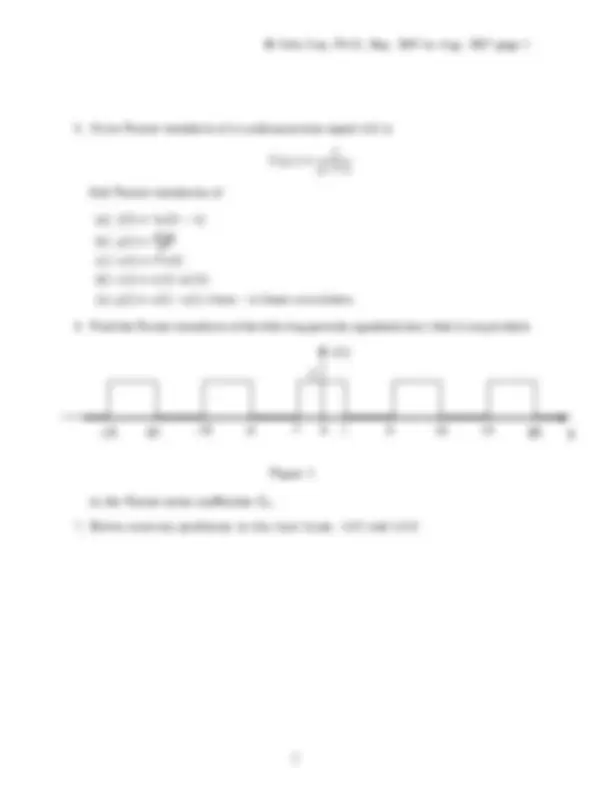



Study with the several resources on Docsity

Earn points by helping other students or get them with a premium plan


Prepare for your exams
Study with the several resources on Docsity

Earn points to download
Earn points by helping other students or get them with a premium plan
Community
Ask the community for help and clear up your study doubts
Discover the best universities in your country according to Docsity users
Free resources
Download our free guides on studying techniques, anxiety management strategies, and thesis advice from Docsity tutors
The sixth homework assignment for the ee321 course on fourier transforms and their applications. It includes problems on finding fourier transforms and inverse fourier transforms of given functions, sketching functions, and using the convolution property to find the fourier transform of the output signal of a system. The document also includes extra exercise problems.
Typology: Assignments
1 / 2

This page cannot be seen from the preview
Don't miss anything!


@ Kefu Xue, Ph.D., Sep. 2001 to Aug. 2007
@ Kefu Xue, Ph.D., Sep. 2001 to Aug. 2007 page 2
X(jω) = (^) jωA + p find Fourier transforms of (a) f(t) = 3x(2t − 4) (b) y(t) = d^2 dtx( 2 t) (c) w(t) = t^2 x(t) (d) v(t) = x(t) cos(3t) (e) q(t) = x(t) ∗ x(t) where ∗ is linear convolution
Figure 1: to the Fourier series coefficients Dn.